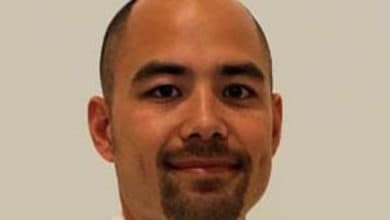7 Medical School Scholarships for Low-Income Students
Did you know that in the last 10 years, the annual average medical school tuition has increased by over $10,000?!
Yea, me neither.
And it’s quite frightening to think about honestly.
Especially for pre-med students who come from economically disadvantaged homes.
How can someone possibly afford this?
It’s a struggle indeed but buckle up, this blog will tackle various medical school scholarships to alleviate the financial burden of attending medical school.
National Medical Fellowships Need-Based Scholarship Program
This organization offers a plethora of scholarships for underrepresented medical students. NMF’s mission is to dismantle the healthcare disparities minority populations face in the U.S. There scholarships are for but are not limited to African American/Black, Hispanic/Latino, American Indian, or Alaska Native.
National Health Service Corps Scholarship Program
This scholarship involves medical students committing to serve in underserved areas throughout the U.S. In exchange for their service, medical students can have their medical school tuition fully paid. For every year of tuition covered, medical students must commit to serving two years in an underserved area.
The one caveat to this scholarship is that medical students must specialize in primary care. Medical students may only choose from the following list of specialties:
- Family Medicine (3-4 years residency length)
- Internal Medicine (3 years residency length)
- Pediatrics (3 years residency length)
- Obstetrics-Gynecology (4 years residency length)
- Psychiatry (4 years residency length)
This scholarship is great for medical students who are sure they want to pursue a career in primary care, prior to beginning their rotations.
Health Professions Scholarship Program
Pre-med/medical students who long to serve in the armed forces, this is the scholarship for you! This scholarship allows pre-med/medical students to both serve their country and work as a physician, all while having their tuition fully covered.
Essentially, killing two birds with one stone as the saying goes.
Pre-med/medical students must fulfill an obligation of either a 3-year commitment as an active duty officer or 1 year of service for each year of tuition covered.
Note: Pre-med/medical students must enlist in the Army, Air Force, or Navy to receive this scholarship. The Marines and Coast Guard do not offer the Health Professions Scholarship Program.
Board Vitals Medical School Scholarship
This scholarship is through BoardsVitals Inc., a subsidiary of Ascend Learning. Medical students must submit an essay to the following prompt:
“What have you learned from previous failures, and how have these experiences informed your current perspective on healthcare?”
3 winners will be chosen for this scholarship annually, with the number 1 winner winning a $2,000 Visa Prepaid Card, the number 2 winner winning a $1,000 Visa Prepaid Card, and the number 3 winner winning a $500 Visa Prepaid Card.
Contestants must be enrolled in an accredited medical school (in the U.S.) and be residents of the U.S.
MedSchoolCoach #MSCScholarship
If the rising costs of medical school tuition have you concerned, there’s another scholarship opportunity you might want to consider. The MedSchoolCoach #MSCScholarship is aimed at aspiring medical students who demonstrate both financial need and strong academic performance.
This scholarship is perfect for juniors, seniors, or recent college graduates from U.S.-based colleges or universities who have a GPA of 3.5 or above and demonstrate a commitment to community service and leadership.
The MedSchoolCoach #MSCScholarship is designed to assist those who are ambitious but may lack the financial resources or support structures to make their medical school dreams a reality. The scholarship covers a range of services, including MCAT tutoring and medical school admissions advising.
Three scholarships will be awarded annually, including a Gold Award valued at $12,440 and two Silver Awards valued at $3,100 each. If you’re applying for the 2024-2025 medical school application cycle, this could be the financial support you need to propel you into your medical career.
For more details on eligibility and how to apply, visit the MedSchoolCoach website.
Tylenol Future Care Scholarship
This scholarship is awarded by Tylenol (hence the name). The 4 main criteria used to select the scholarship winners are college GPA, academic record, community involvement/volunteer service, and essay content. Medical students must submit two 300-word and a 100-word essay about their career goals. 10 $10,000 and 25 $5,000 scholarship awards will be given to the winners. Medical students must be residents of the U.S.
The White Coat Investor (WCI) Medical School Scholarship
The White Coat Investor is a financial book that has received major success in recent years. If you haven’t heard about it yet, it’s only a matter of time before you hear about it as you progress onwards on your medical school journey. After its major success, the team over at The White Coat Investor decided to offer a scholarship to medical students. The purpose of it states, “to directly reduce the indebtedness of a few students and to promote financial literacy in professional schools”.
Medical students must submit an essay from one of two categories.
The first is “Inspiring Categories”.
And the second is “Financial”.
The former is described as “These are true stories about you, your family, and your background and why it has led you into your profession and how it will affect your career. Perhaps the essay details an experience that happened to you in school that others would find humorous, interesting, or inspiring.”
And the latter is described as, “These essays will describe what you have done in the past or will do in the future to become financially literate or help others to do so. They may also explain a financial principle or experience, or they may give advice to your peers. They may be humorous or serious. But they have to be about a financial topic.”
This medical student’s essay won her $7,671 by detailing her family’s frugality when it came to money.
For some pre-med students, realizing the alarming cost associated with becoming a physician is enough to steer them to pursuing a different career, while other pre-med students decide to continue onwards with the path and take out loans to fund the majority of their medical school education. The aforementioned scholarships are a great stepping stone to alleviating the overwhelming debt medical students are bound to face.
For a list of financial resources and other medical school scholarships, check out Best Scholarships and Financial Resources for Underrepresented Pre-Med Students.



